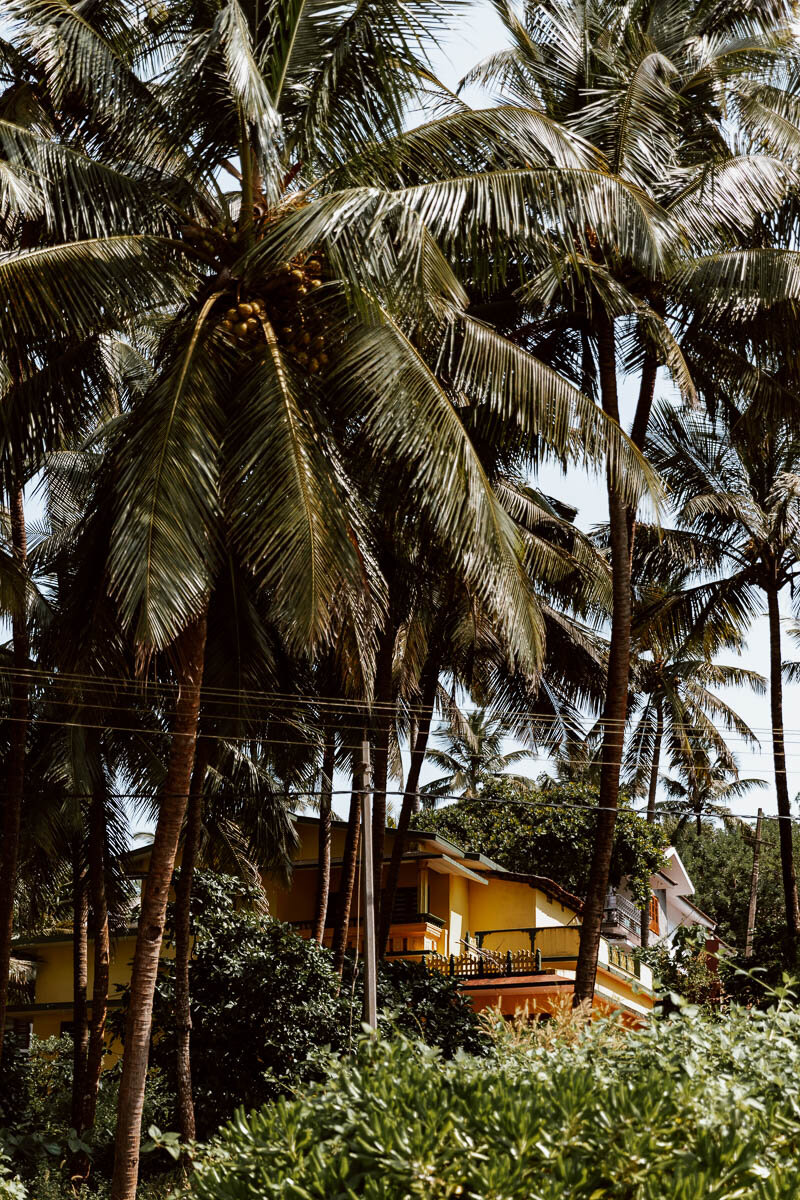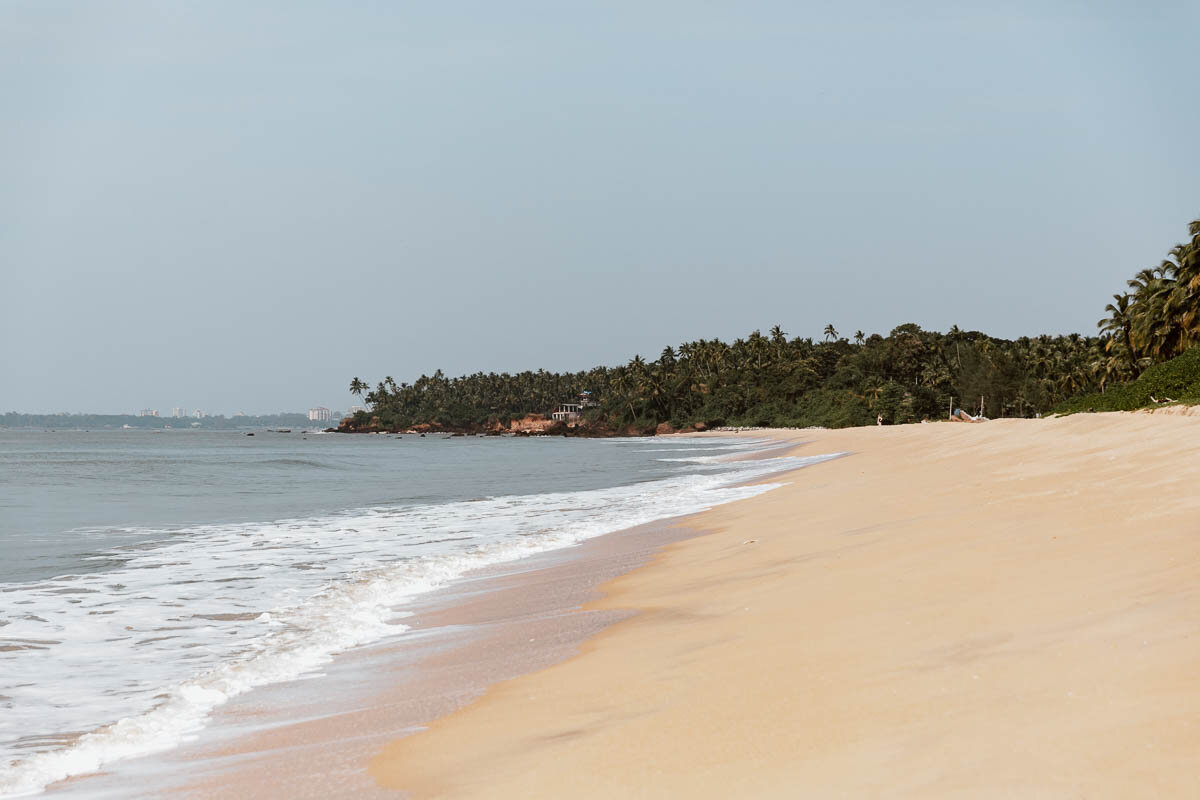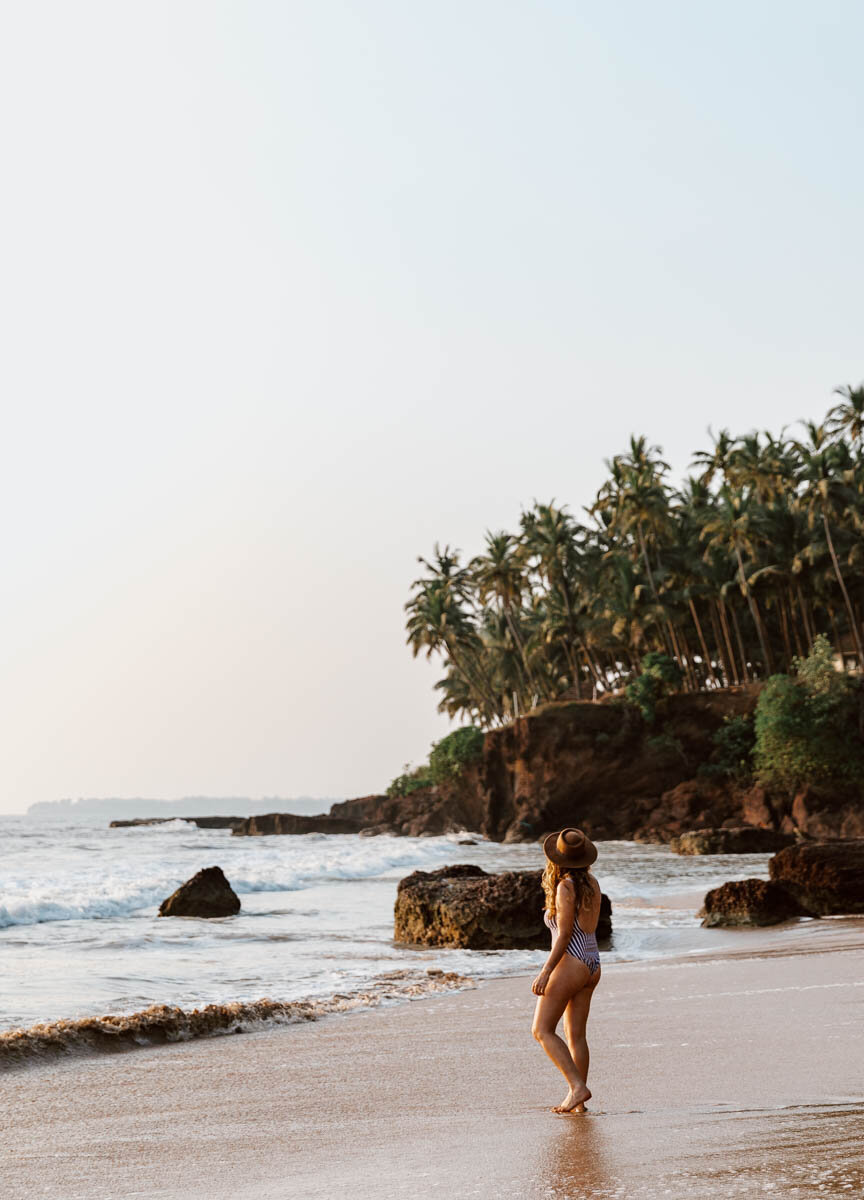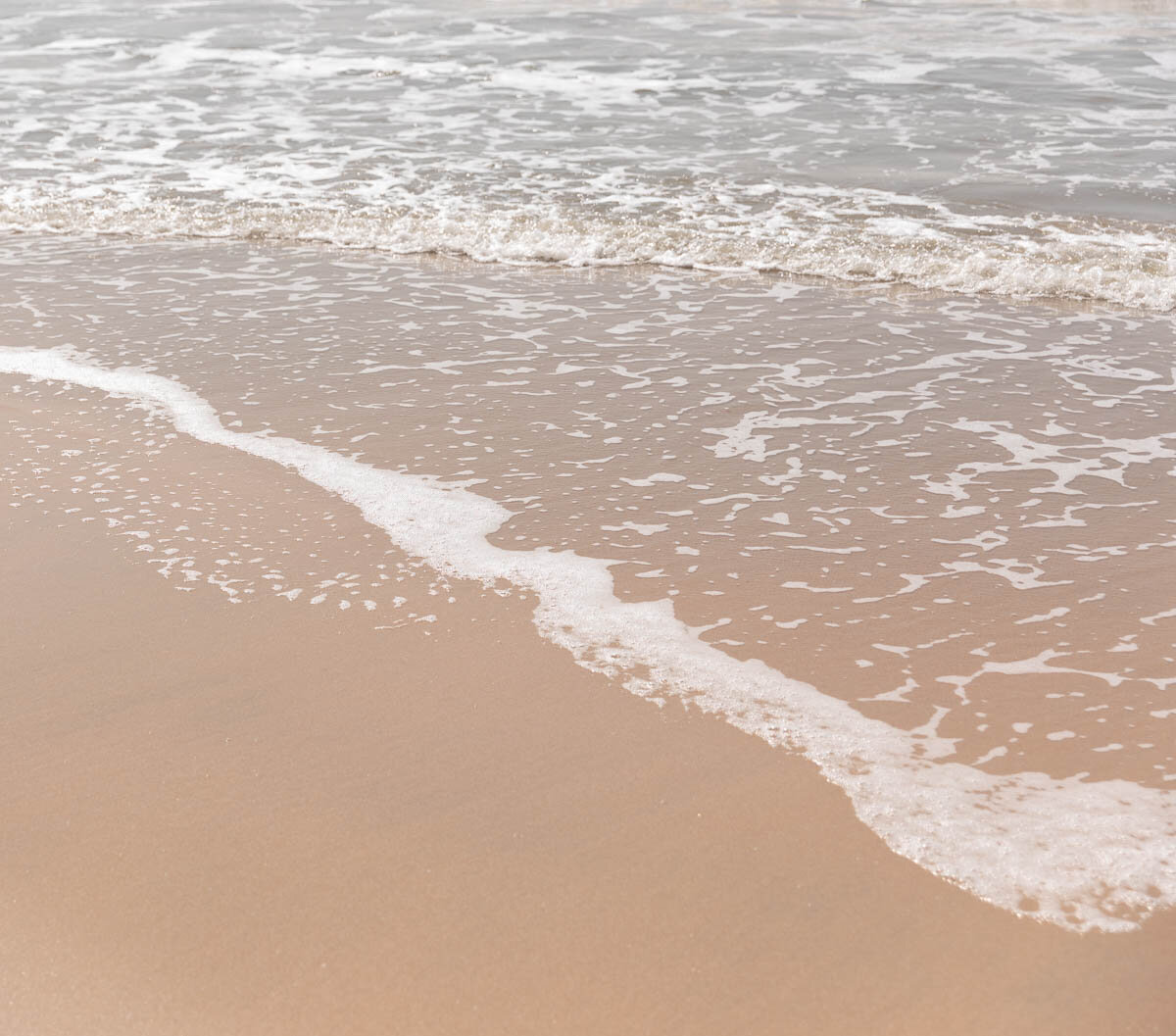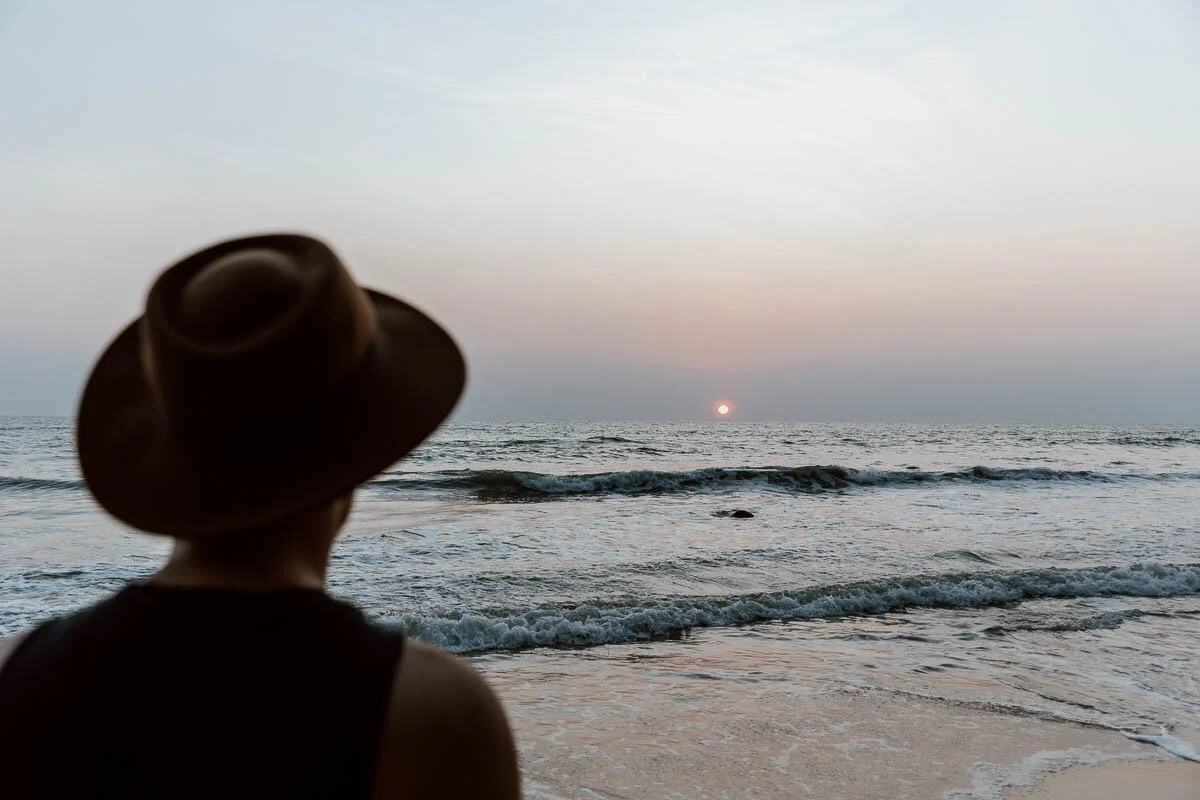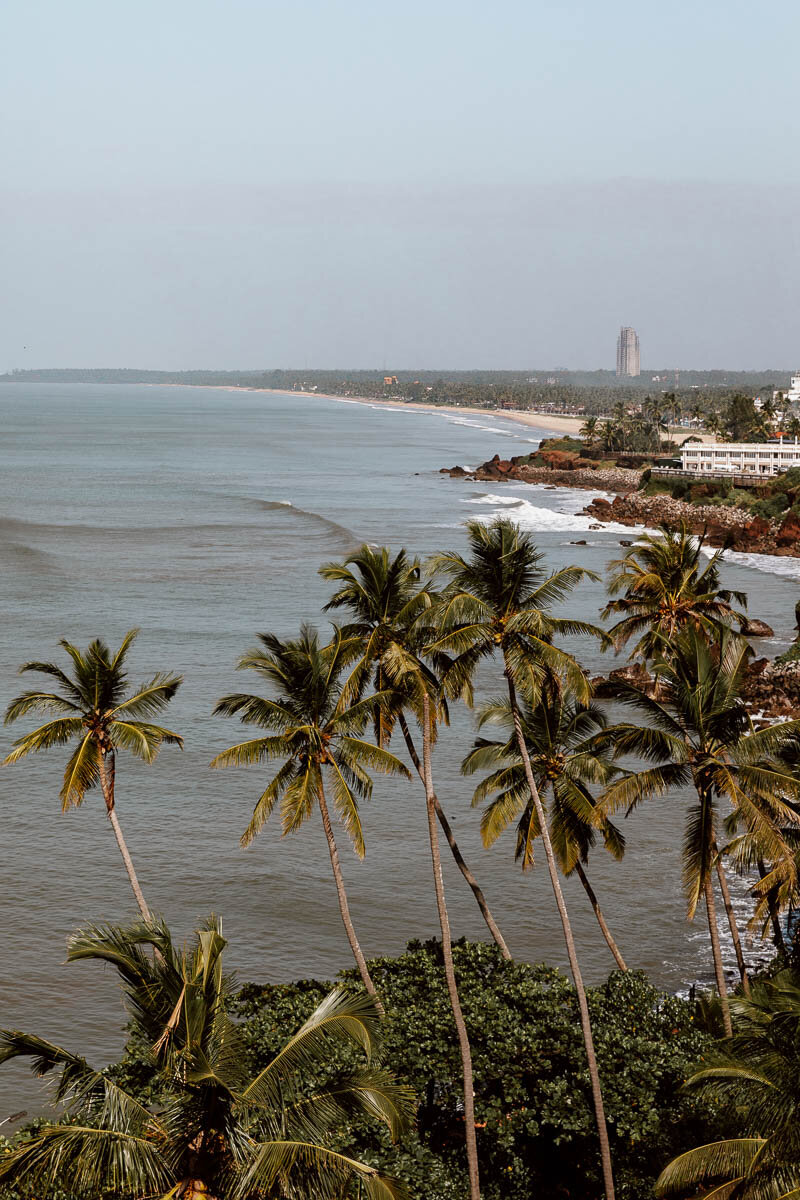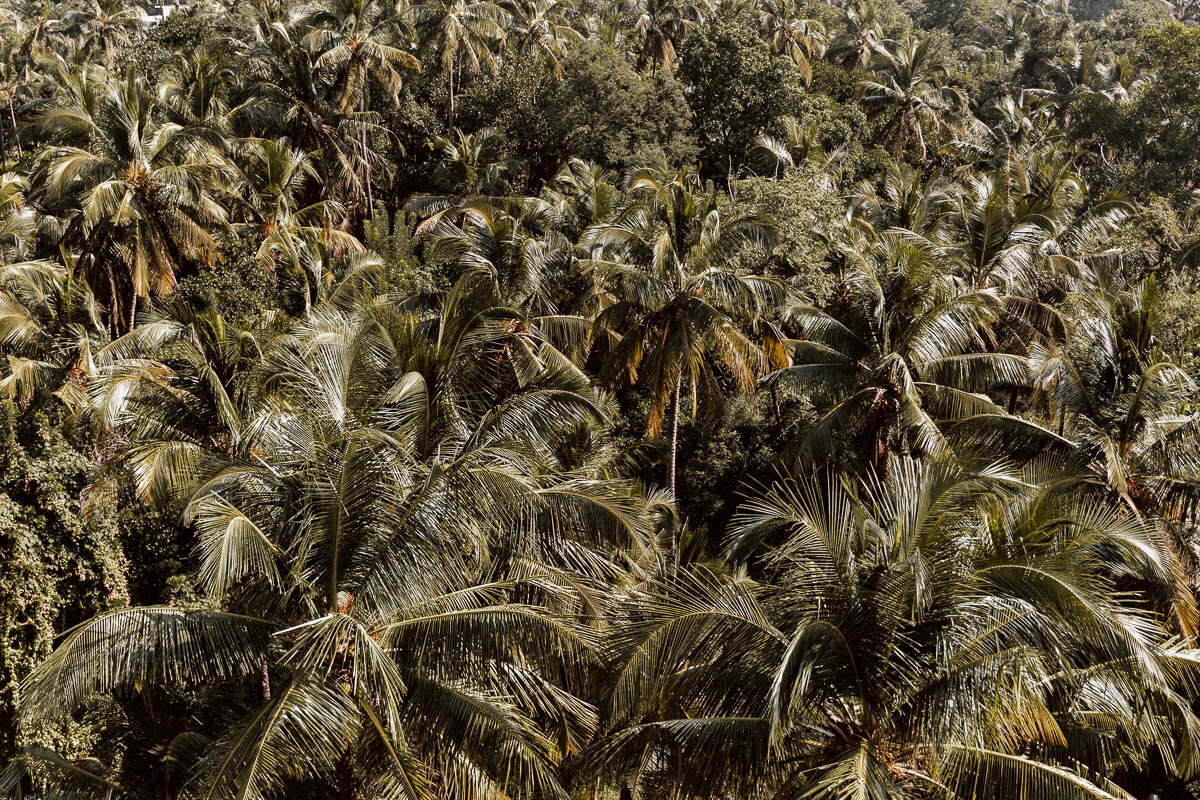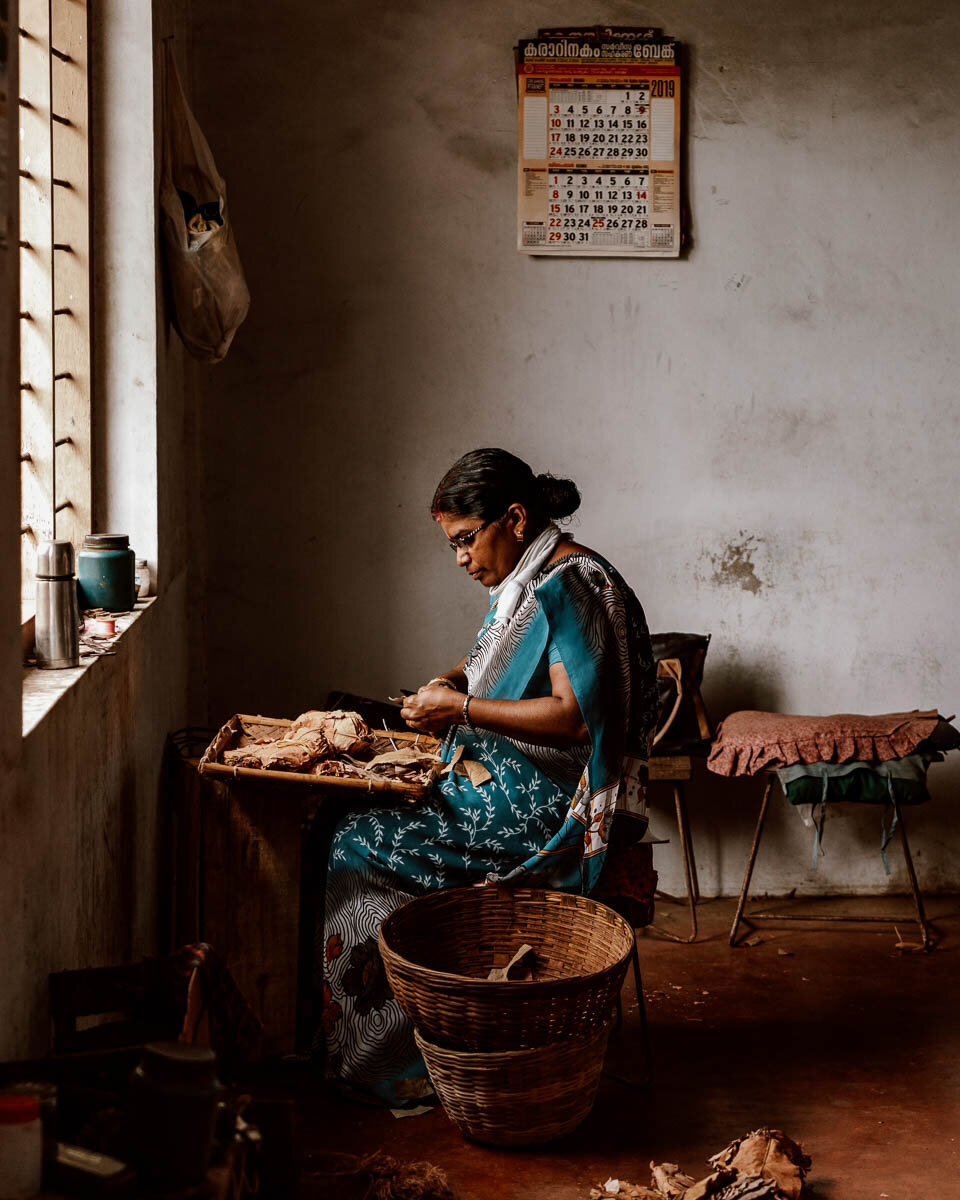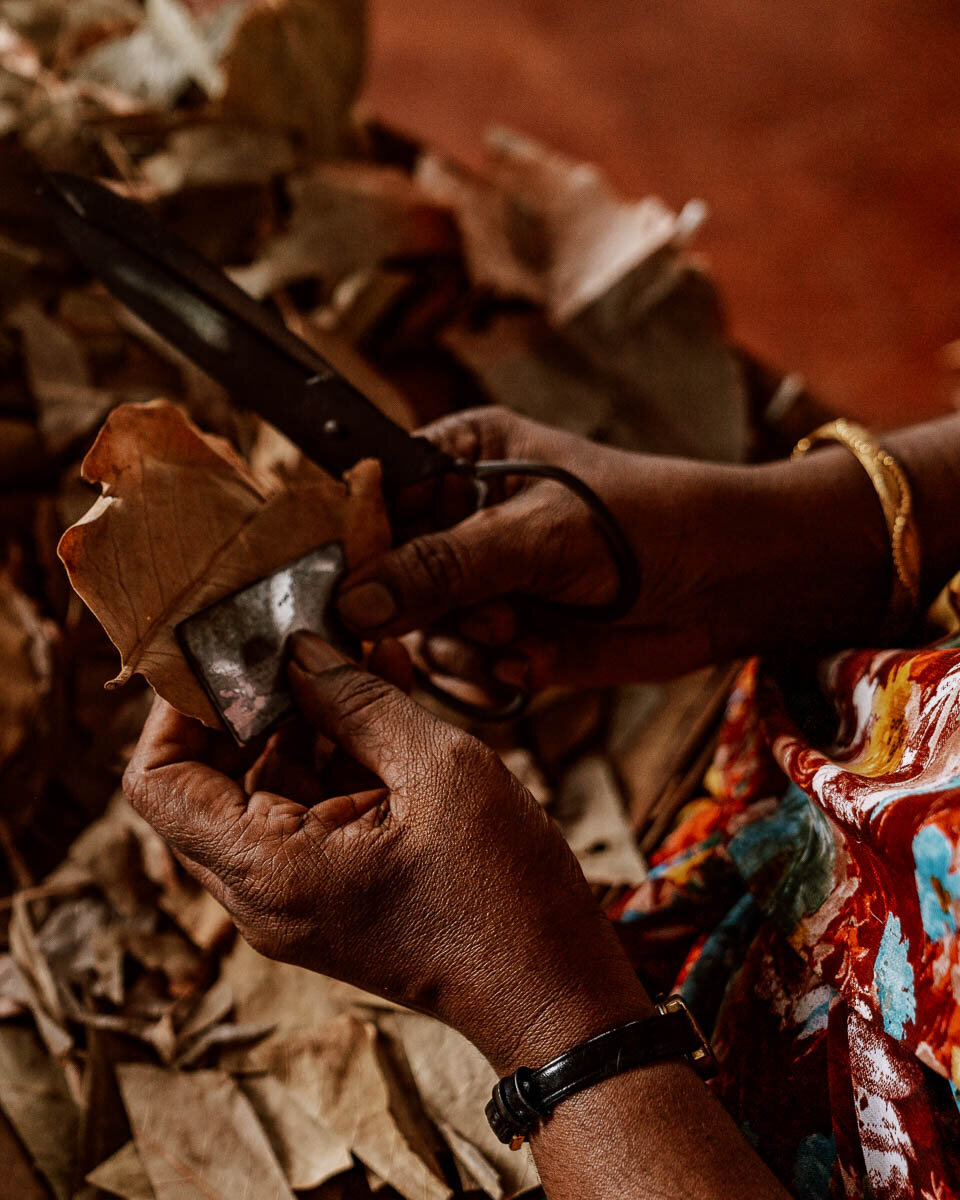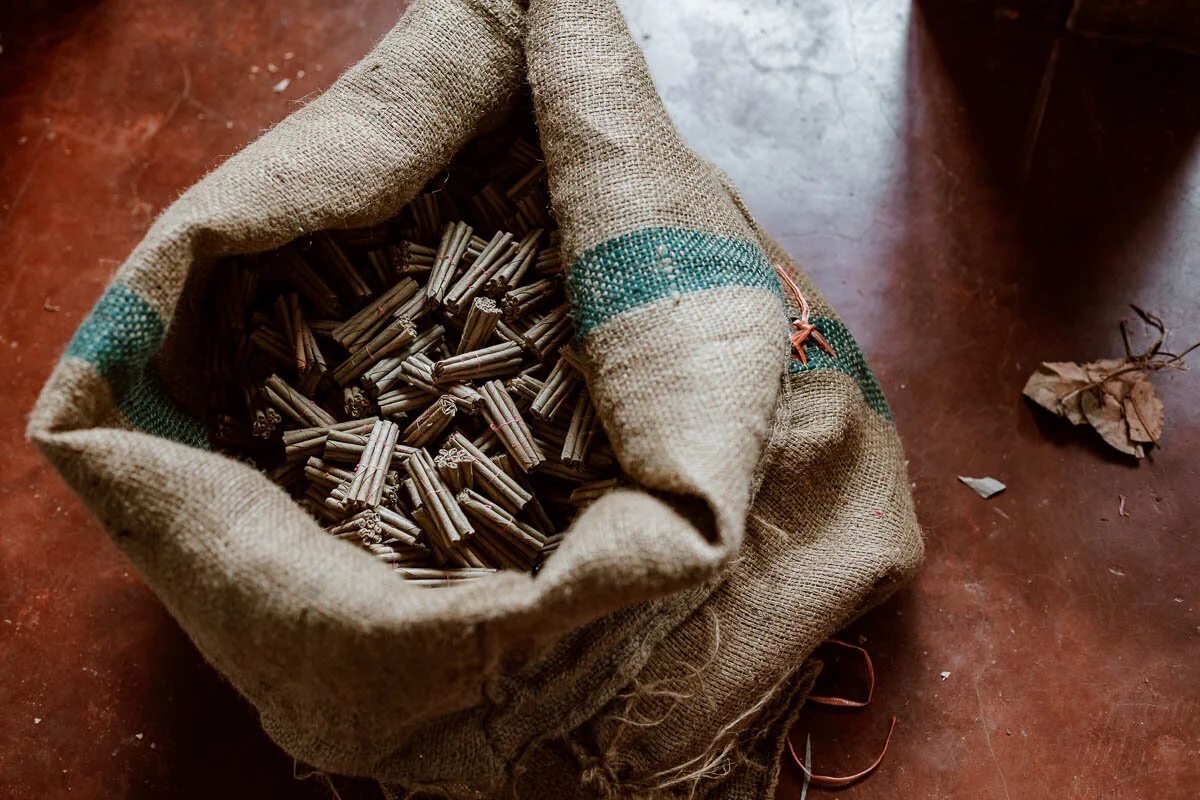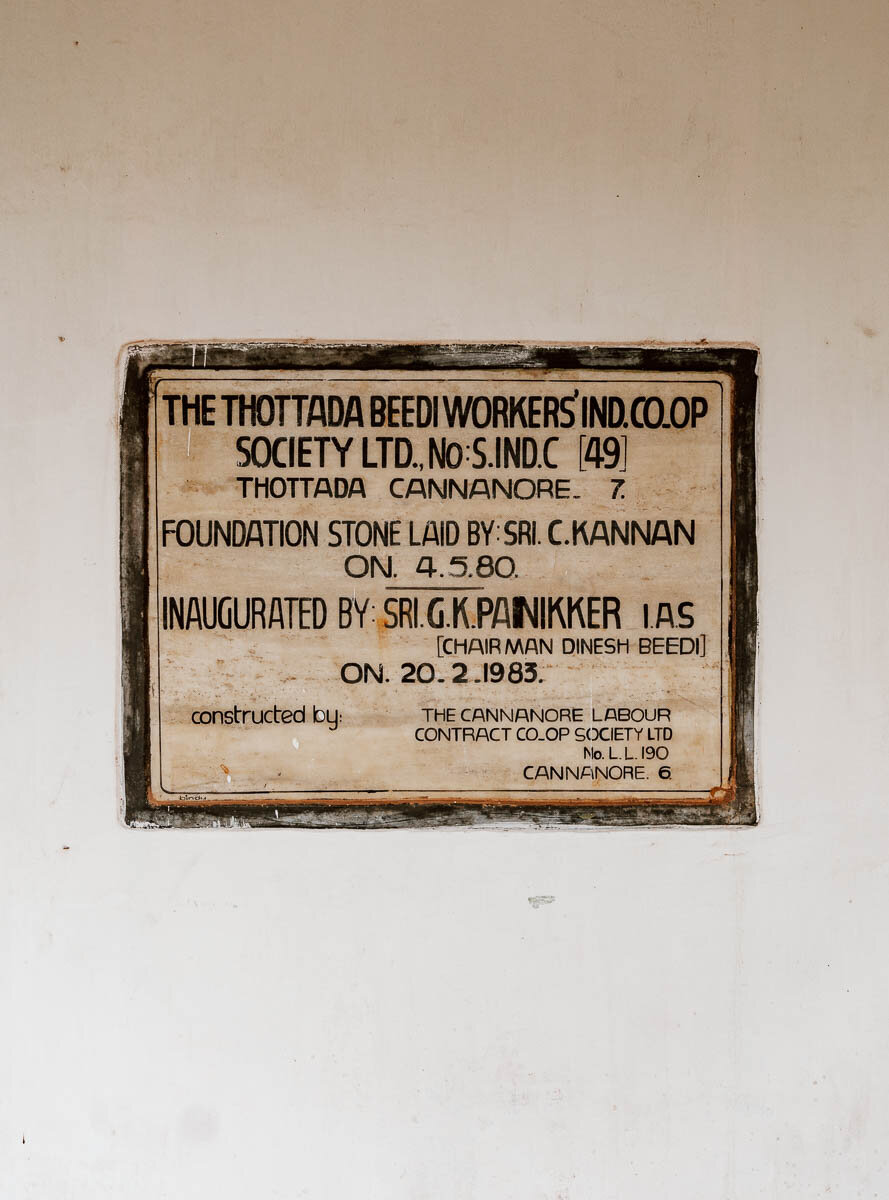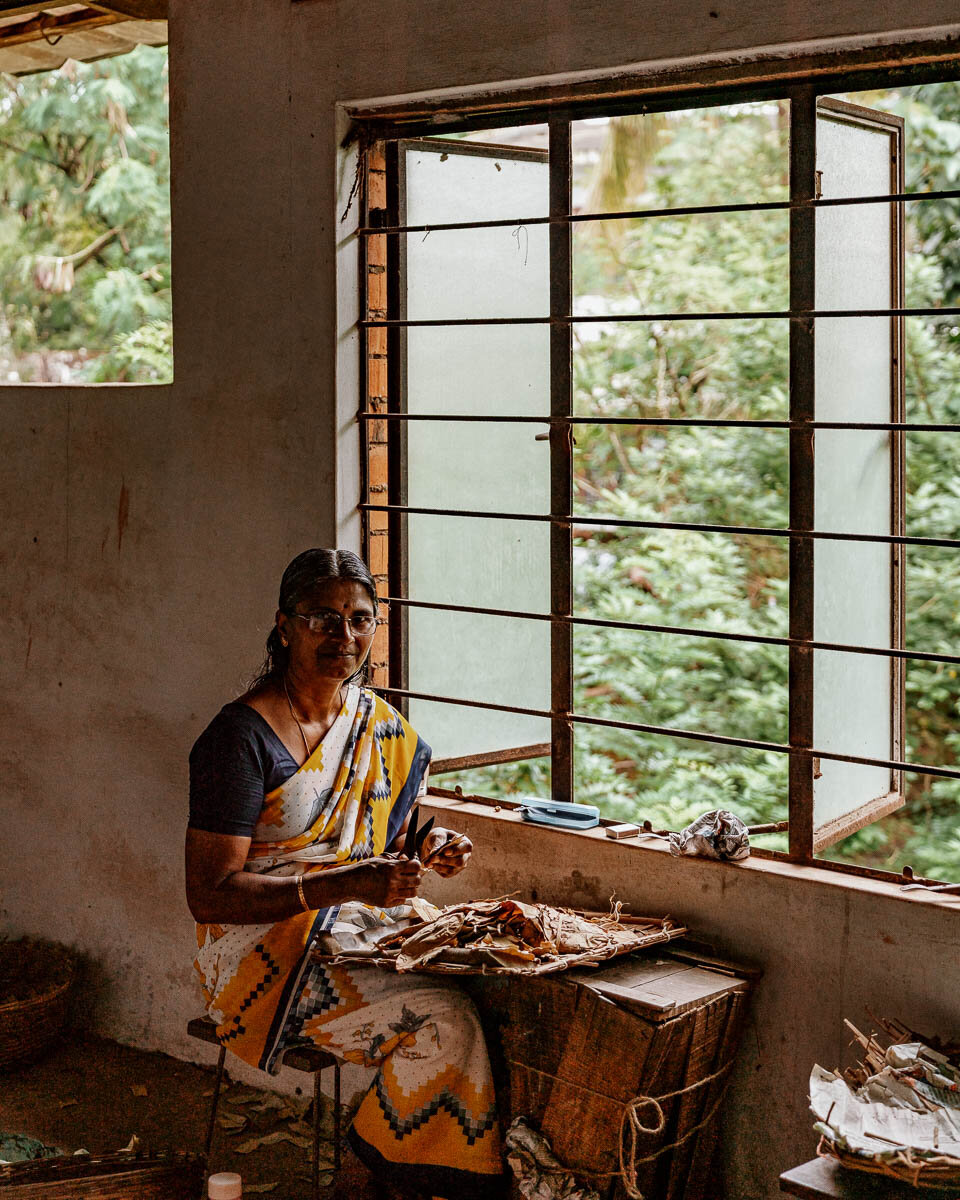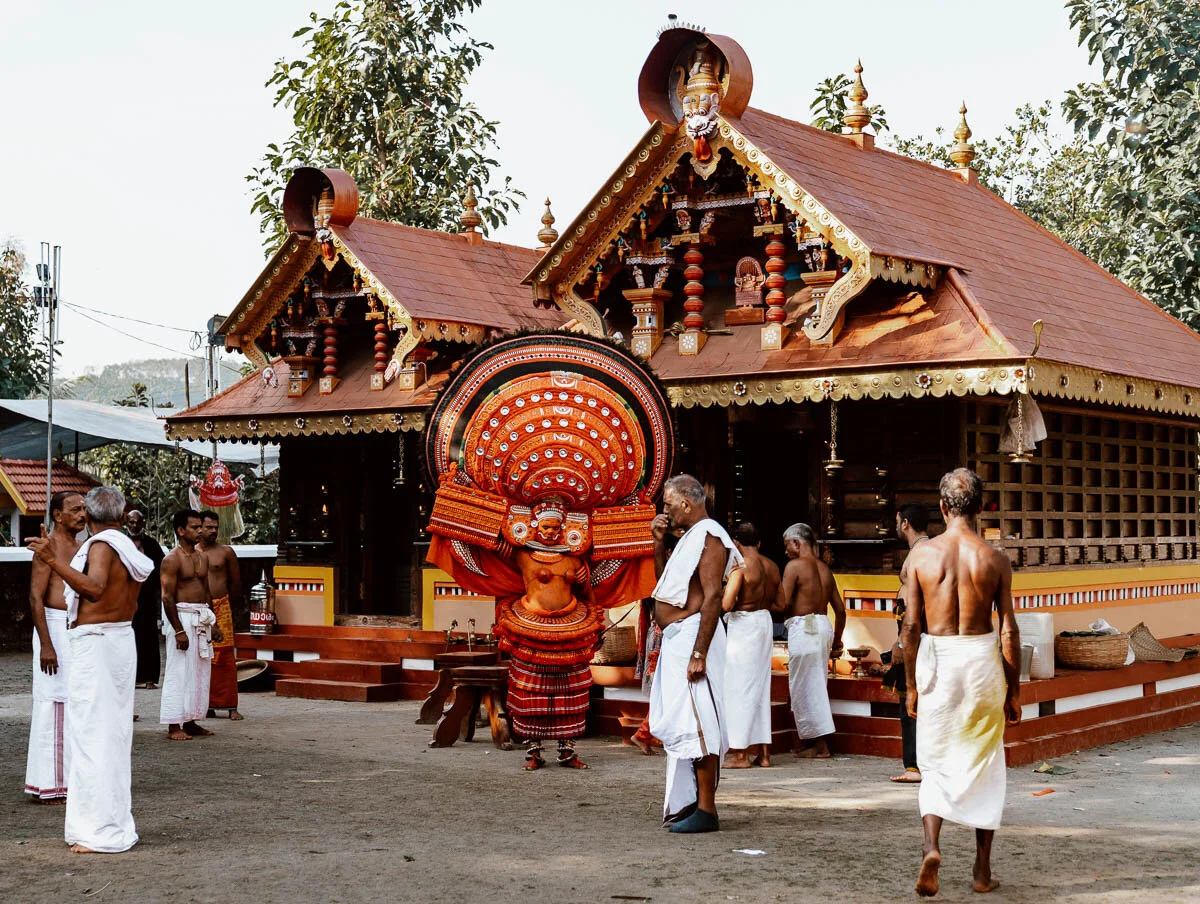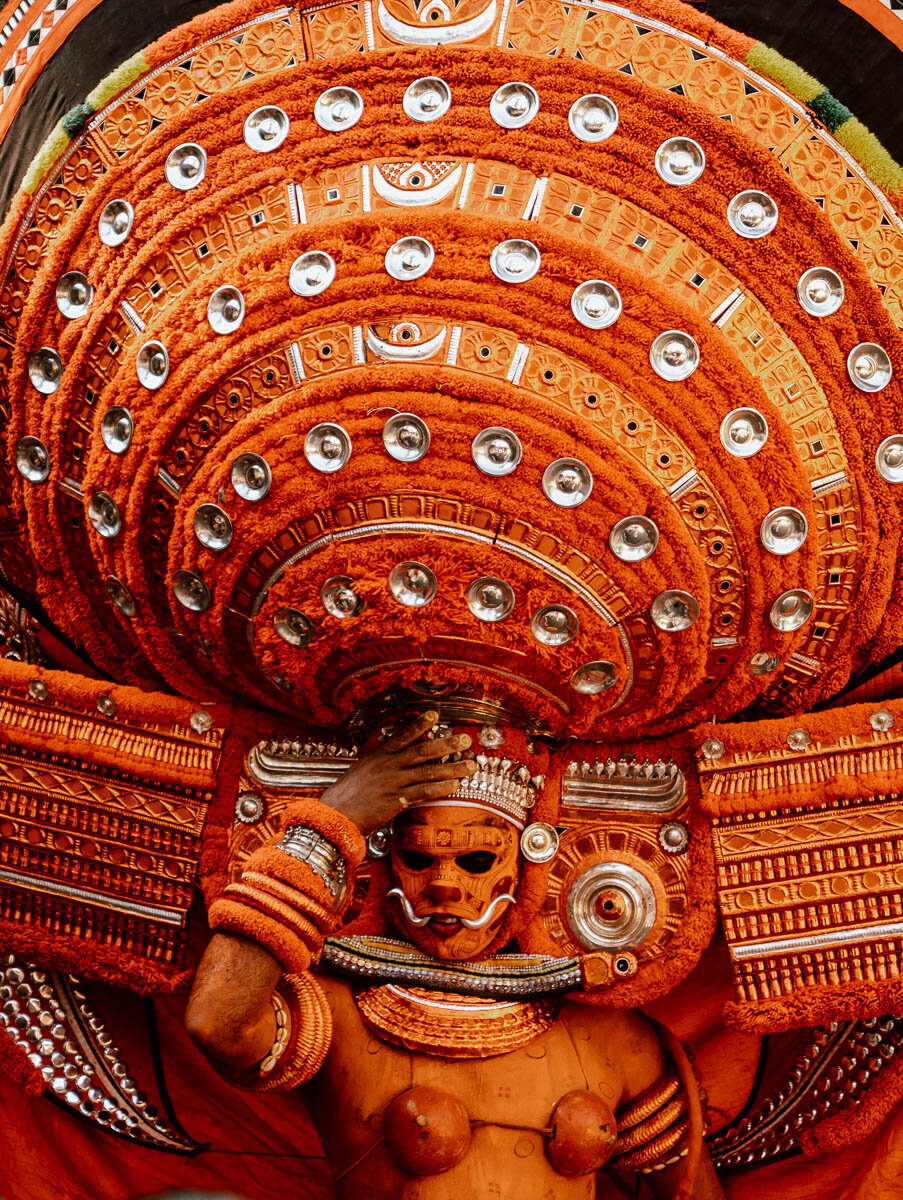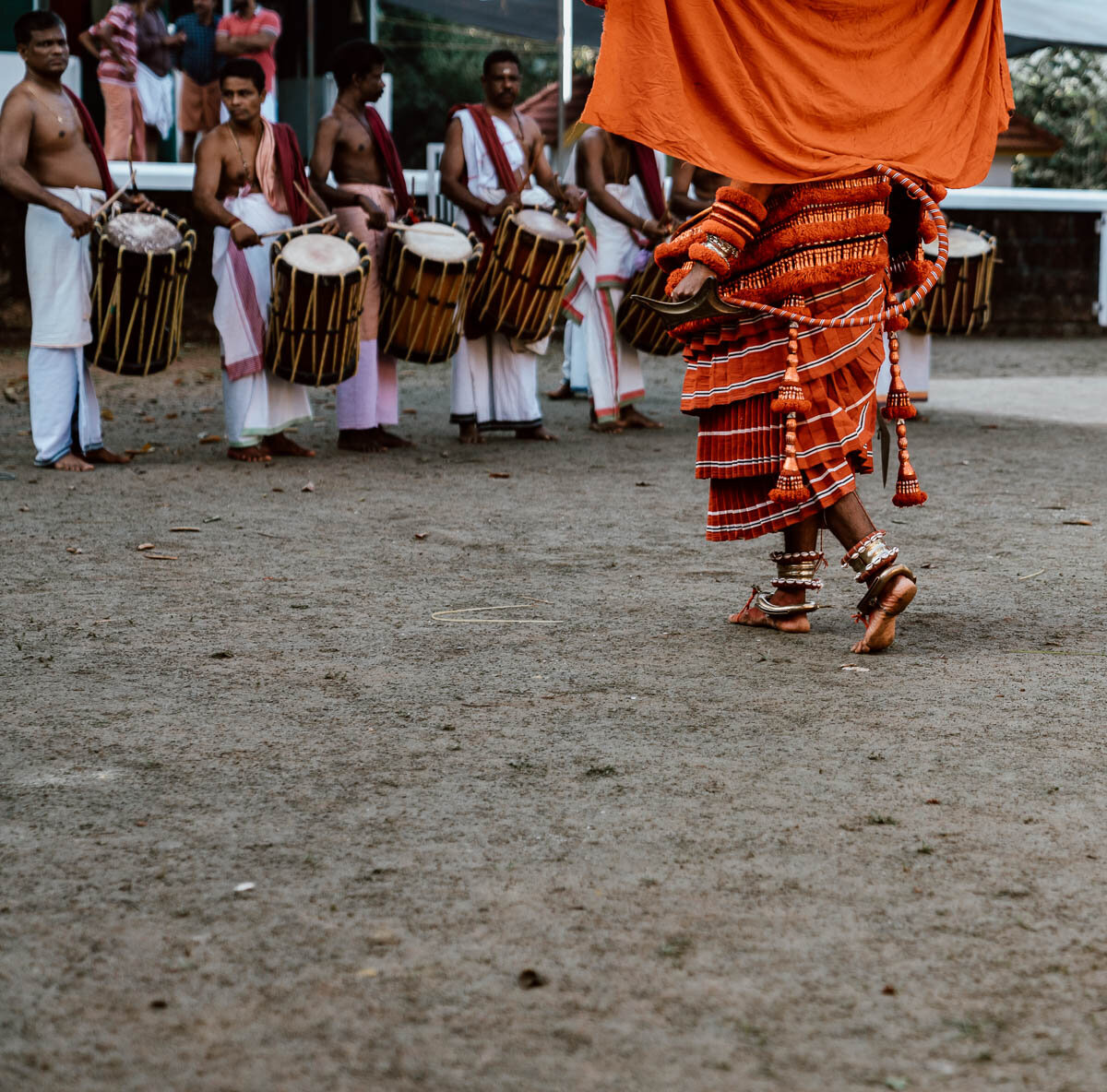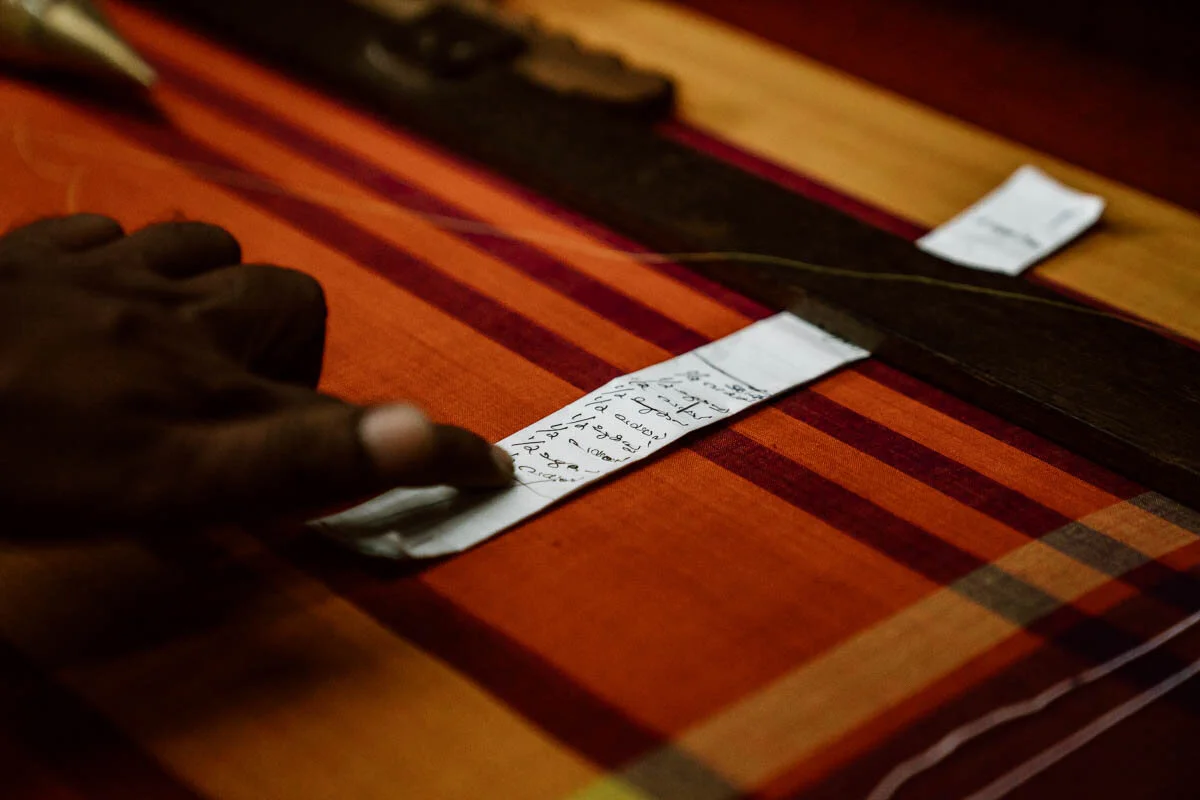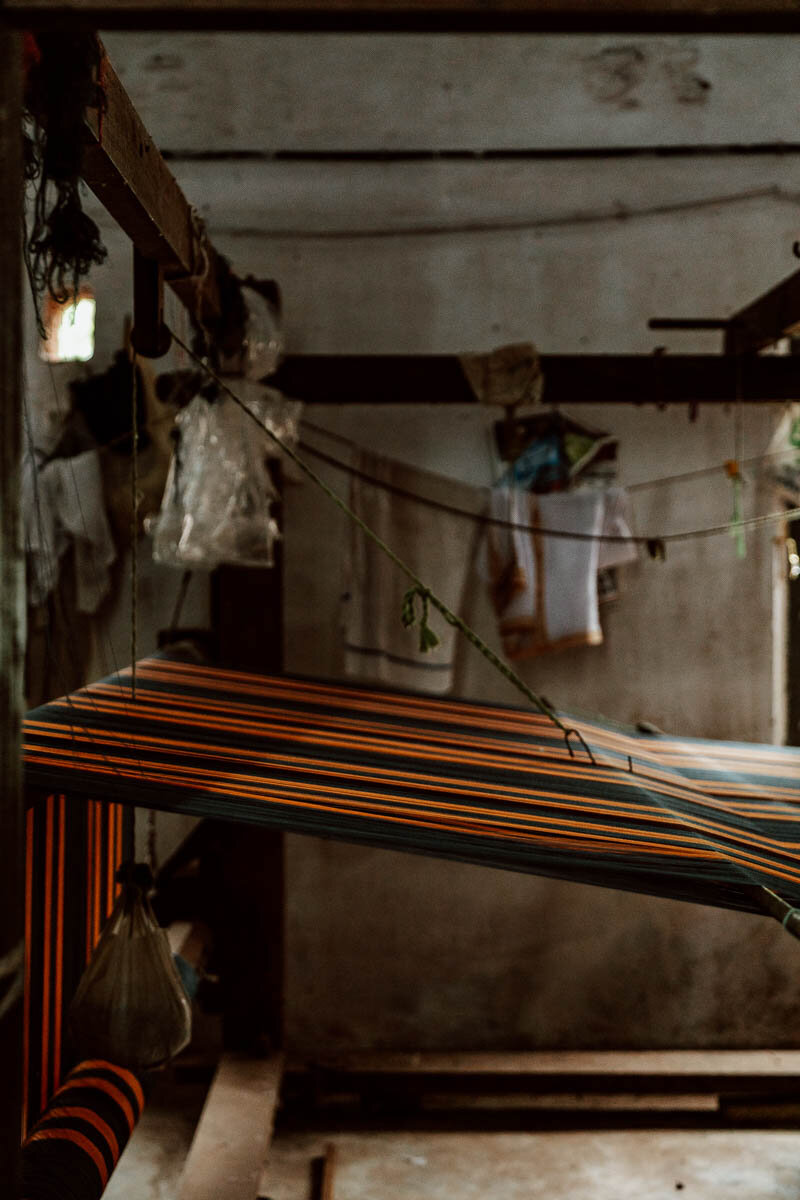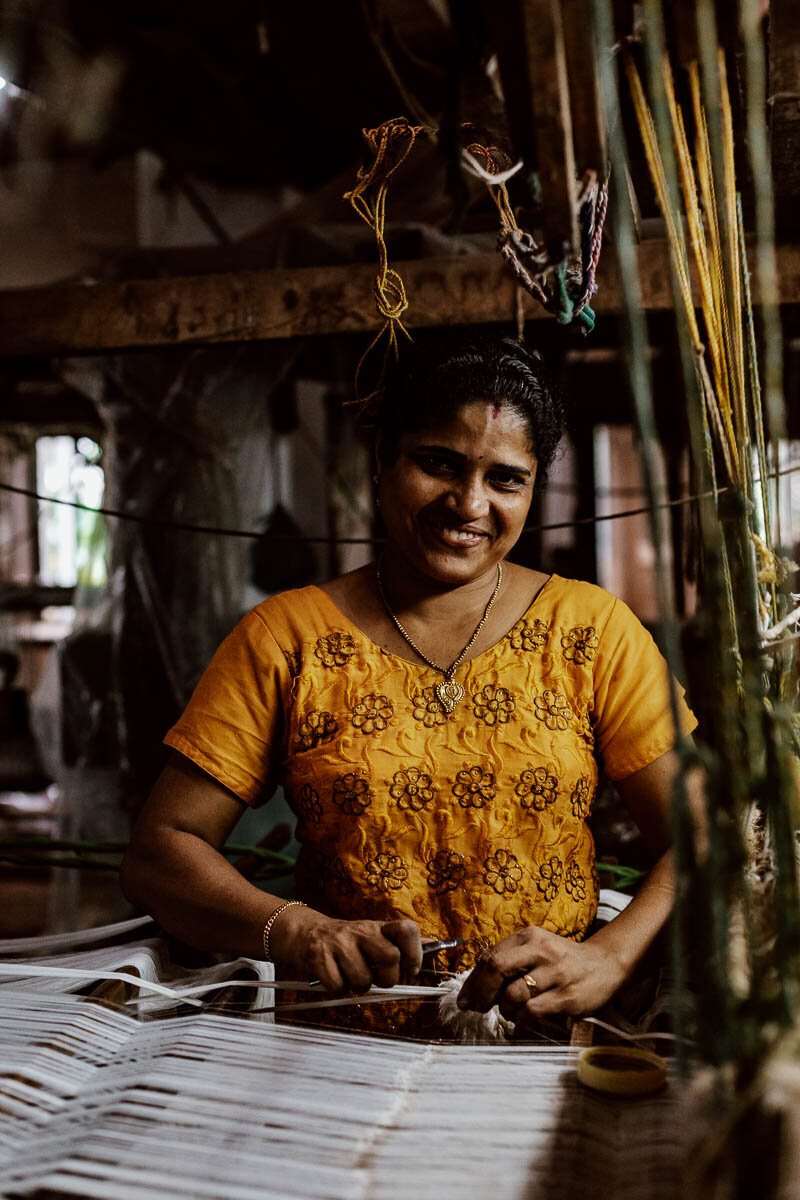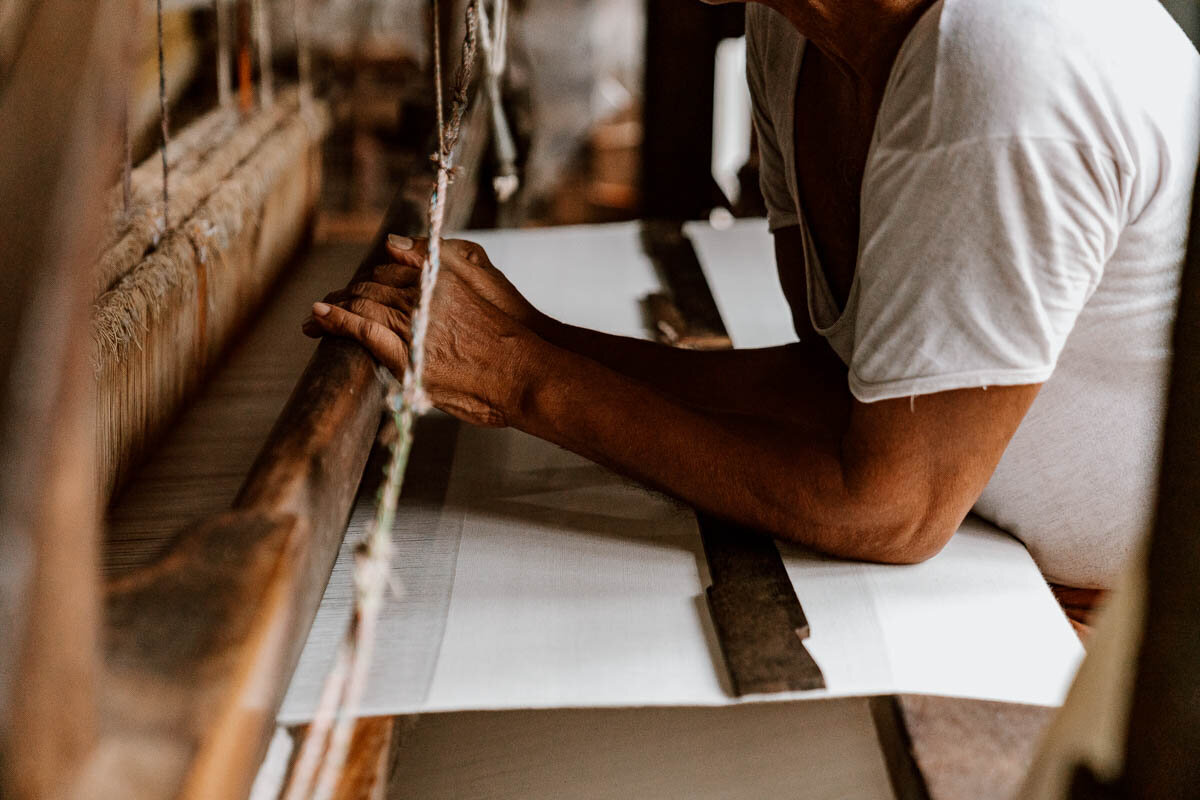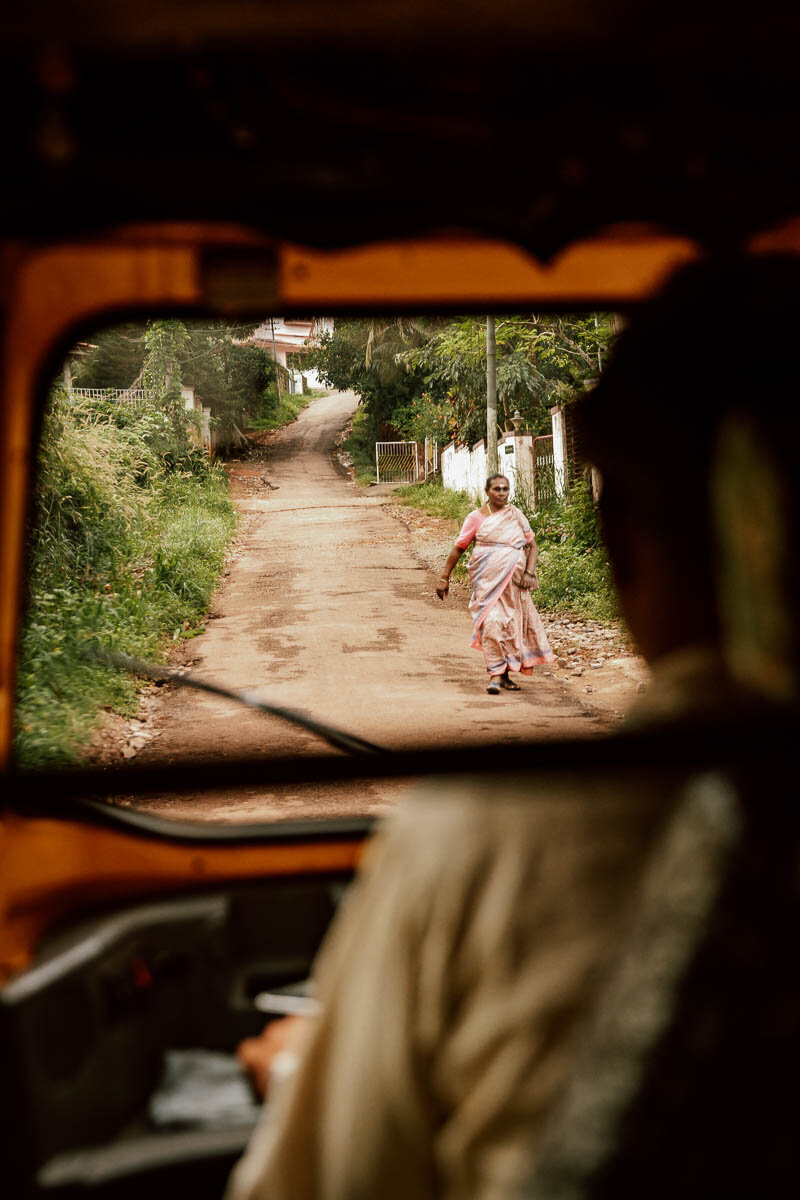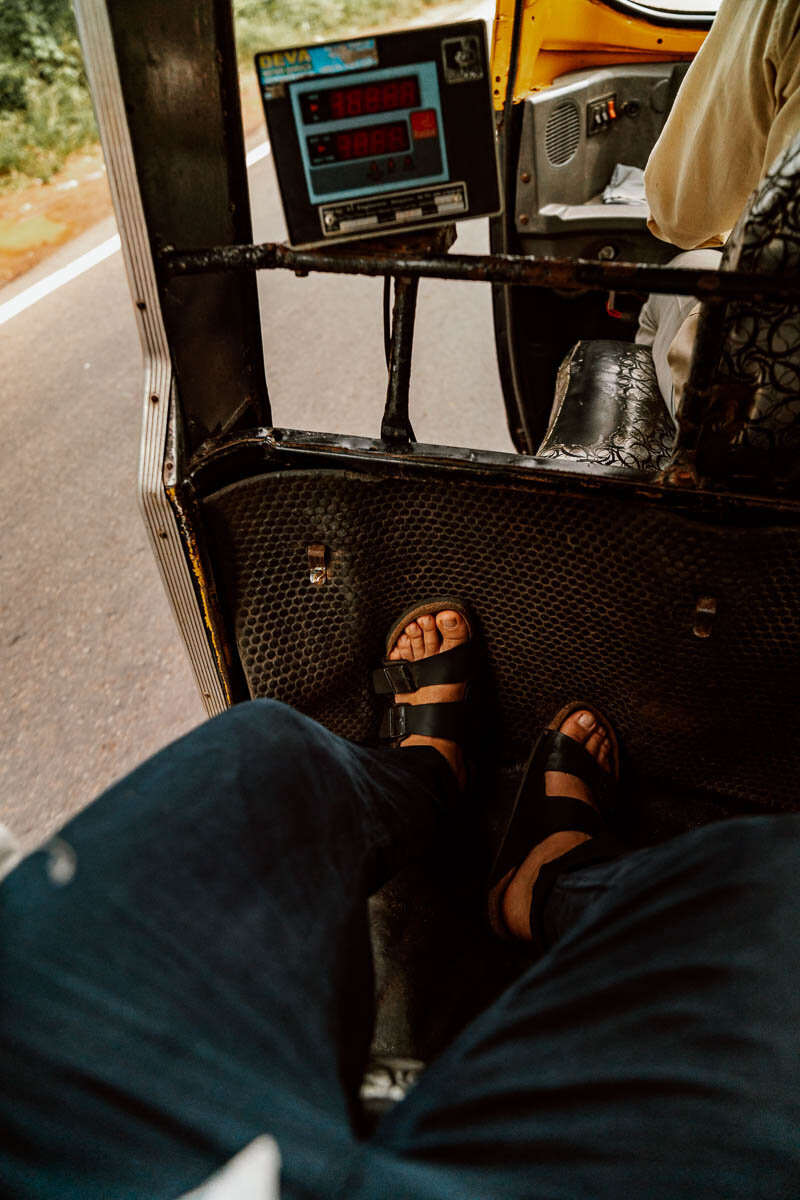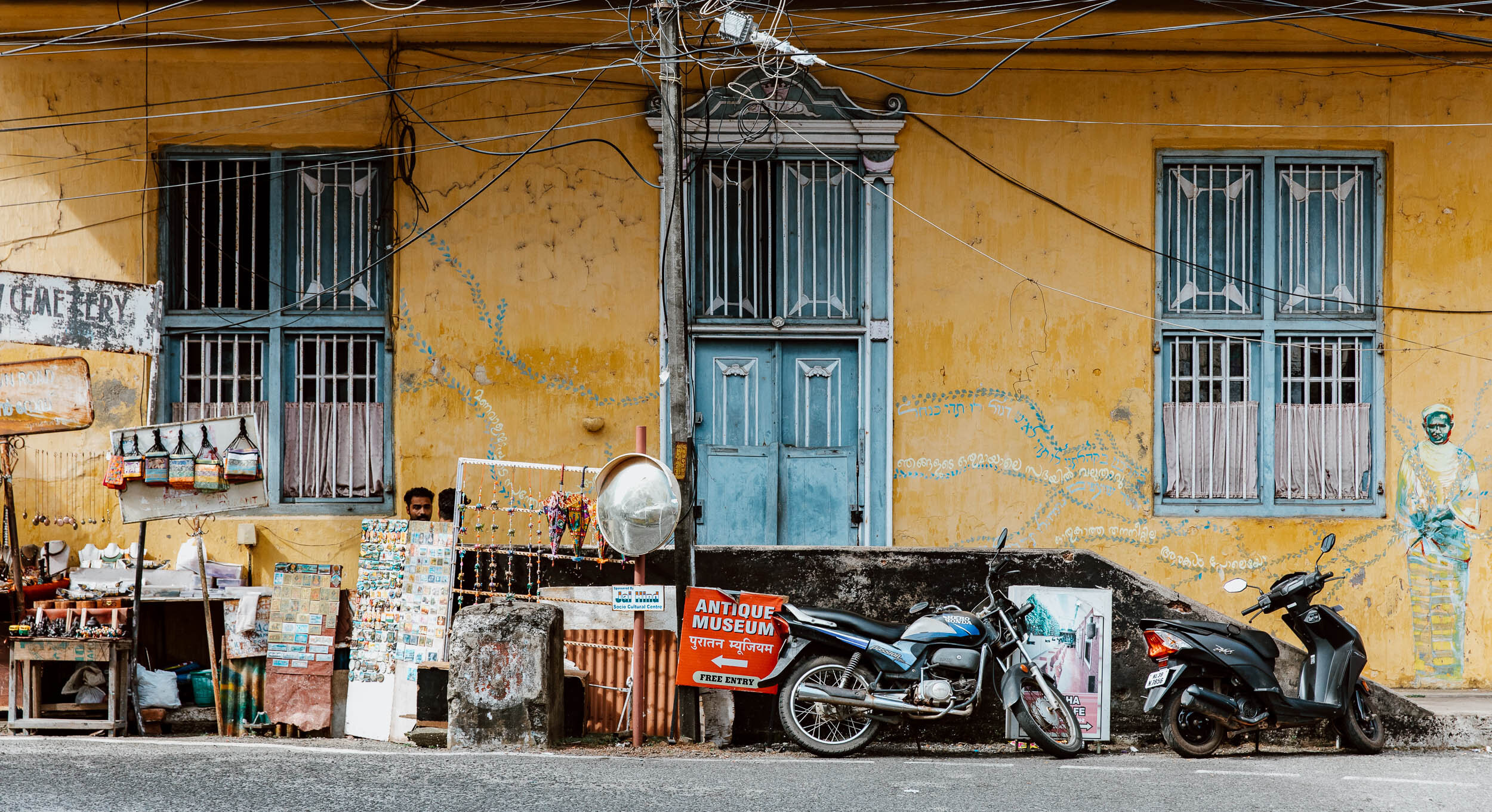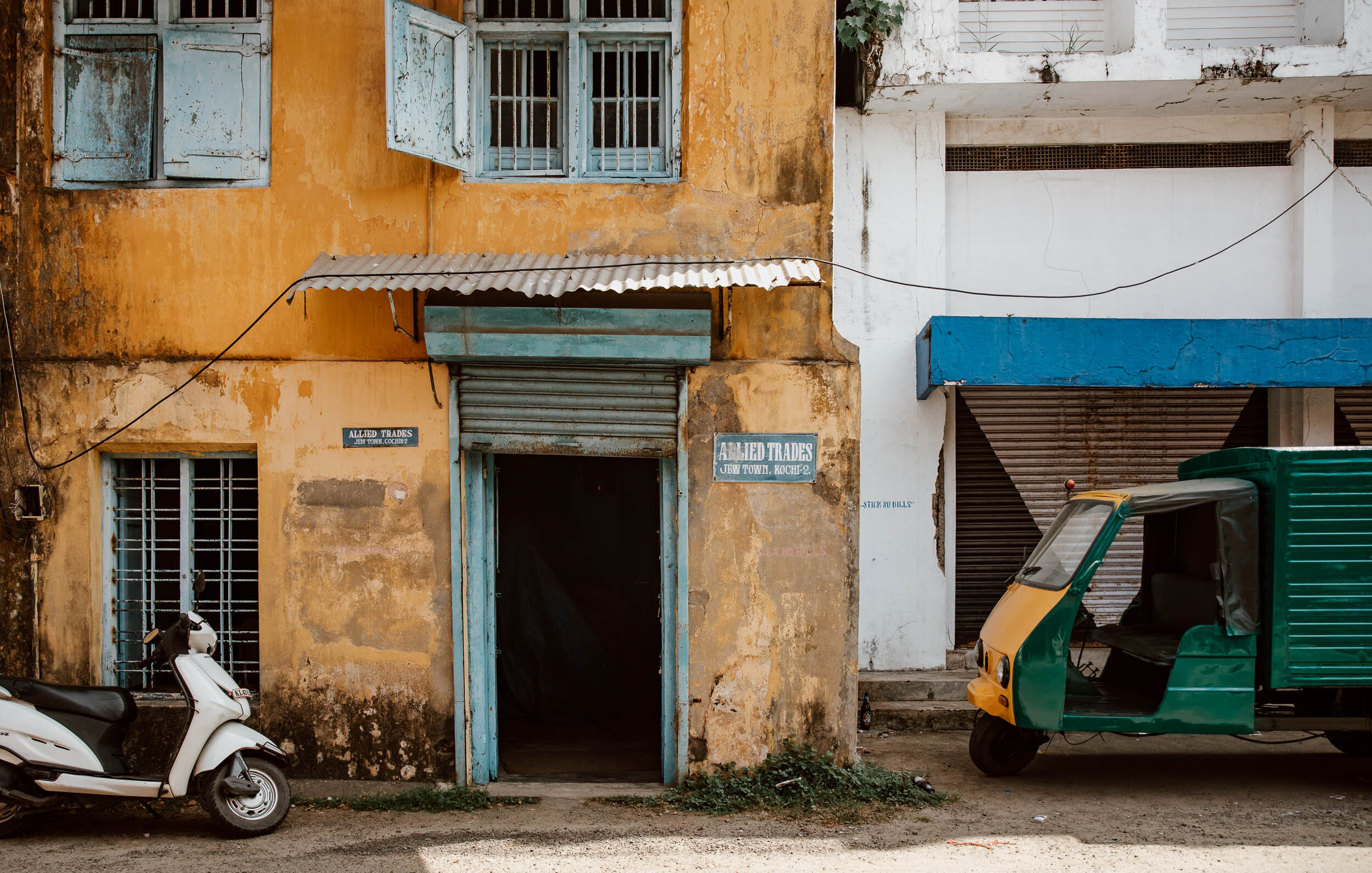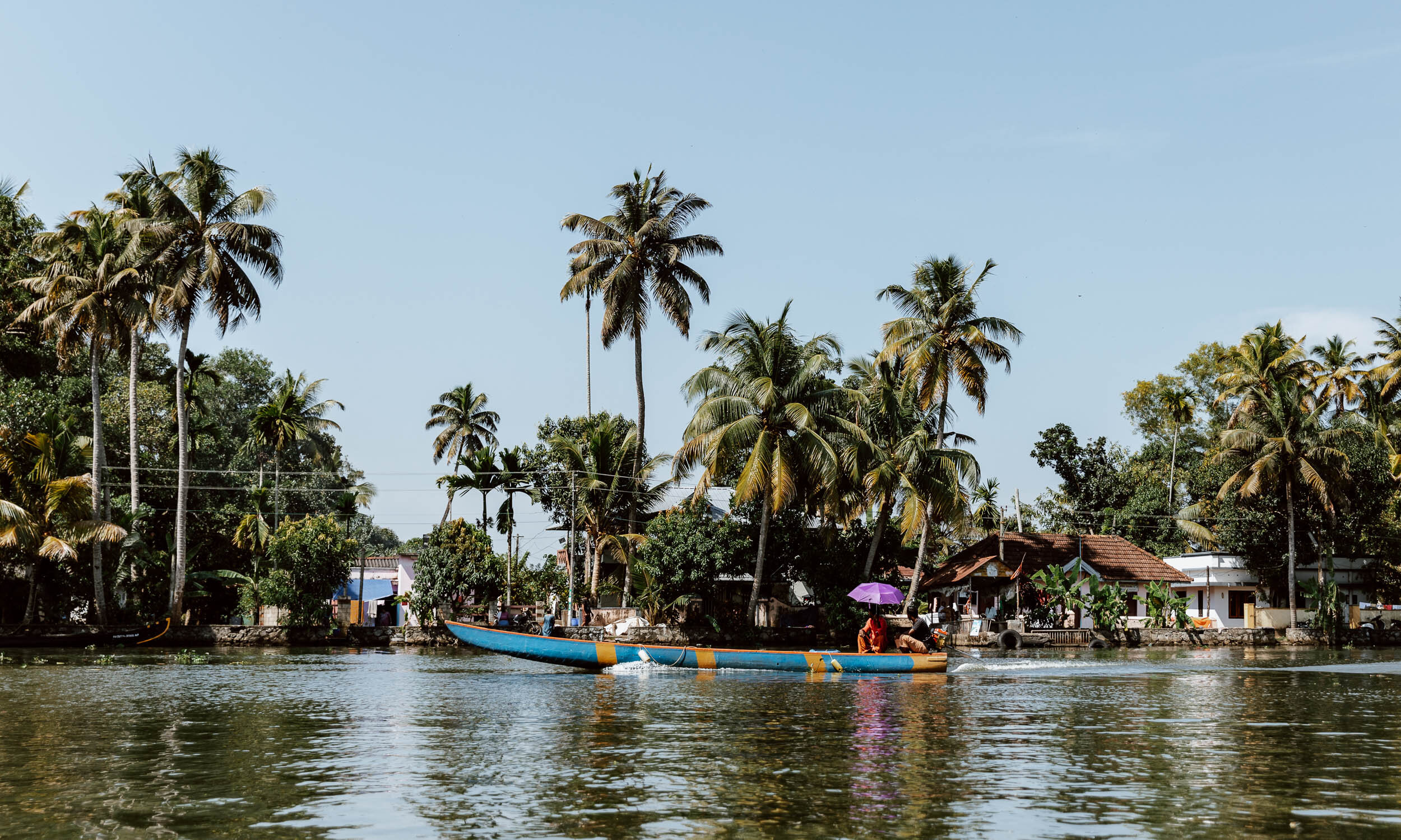Kannur was probably our very favourite stop in Kerala, and this guide will allow you to plan the most magical of stays too.
We explain all the best things to do in Kannur, tips on how to get there, and our pick of where to stay!
We arrived under the cover of darkness, exhausted from a day of trains, buses, and ever changing landscapes.
A day punctuated solely by arrival and departure times, hot cups of chai (in an already stifling hot environment), and a continual rotation of passengers.
Travelling without internet, it was a worn piece of paper clasped in Andrew’s right hand which held our final destination for the day; a guest house on what was promised to be on the most magical of Keralan beaches, in a place that was skipped over by most visitors to the region.
A dot on a map guided our increasingly confused rickshaw driver along narrow roads towards the water, past sleeping Indian cows that no longer flinch at traffic, roadside sweet stands, and illuminated two-pan restaurants. The visual and aural cacophony in this larger-than-life country a delight for the senses, even for two travel weary souls.
It was only once asphalt gave way to dirt, once city lights faded into the star lights, and we drove deeper into the dark that we could smell the sea, and could hear its crashing waves growing ever closer yet remain invisible beneath the inky black sky.
Morning arrived with the urgency and excitement of a Christmas Day.
After devouring a delicious and delicate breakfast lovingly prepared by our host, it was time to amble along the narrow dusty road that led from our guest house toward the sea, only 150 metres or so away. Down slippy smooth rocks and clinging onto branches, it opened up to a breathtaking vista of small, perfectly formed waves lapping at a white expanse of sand, edged by swaying palms heavy with their ripening bounty.
This was paradise by any definition, with nobody there to enjoy it but us.
We really should have gone straight to Palolem Beach in Goa, but in that instant it was clear that coming to Kannur was always the right decision for two travellers like us.
The very best Things to do in Kannur, kerala
Laze on the most wonderful of beaches
We didn’t come to Kerala for its beaches. We mean, sure, we planned to visit a few along the way, but we’d designated Goa for our sun bed lounging and sun tan getting destination.
But then Kannur happened, and well, we kind of didn’t want to leave.
The Lonely Planet mentions that the north of Kerala has the state’s best beaches, and they absolutely weren’t exaggerating; we just wish we’d had longer to explore them!
Thottada Beach
A short ten minute walk from our accommodation was Thottada Beach.
This long, wide stretch of coast, bookended by groves of palm trees and a handful of family run guest houses, in undeniably lovely, and had we not already been blown away by Kizzhuna (see below), this is exactly the sort of isolated spot that we would have been more than happy to chuck down a sarong and listen to the waves for hours.
But, we’d already found the most perfect beach in Kerala…
Kizzhuna Beach
Whilst being massive beach lovers, you may have noticed that we - as a travel blog - don’t spend too much time talking about beaches. Despite this, we’re ready to make a bold statement about Kizzhuna… we think it may just be the most incredible beach we’ve ever visited.
Yep, we said it.
Were it not for pretty strict building regulations in northern Kerala (a good thing), and the relative lack of touristic development in this part of the region (again, a good thing), it would almost certainly be either covered in tourists or part of some luxury 5* resort (definitely a bad thing).
But you know what? We had it all to ourselves, two days running. In fact the only other person met was a local doctor who had recently moved to the area, and seemed as surprised as anyone that this incredible spot actually existed.
It. Was. Perfection.
A little secret that partly explains the beauty of Kizzhuna is that unlike all the other beaches in Kannur, this one is made of ‘virgin sand’. That is, due to the harsh monsoon storms and high waves that thrash this part of the coast during the rainy season, the sand never remains for more than a summer - it’s ‘new sand’ that is brought in every year. Sand without rubbish, without weathering, and as close to damn near perfect as you can apparently find in almost anywhere else in India.
Other Beaches to Consider Visiting
Payyambalam Beach | This is Kannur’s main city beach and, as such, it’s incredibly popular - especially at sunset when groups of friends and young couples flock to the sand to enjoy a pretty view. Given Kizzhuna was literally minutes from our front door though, we were never drawn to visit this particular beach but there are certainly worse places to sit and watch the world go by.
Muzhappilangad Drive-in Beach | With the title of ‘Asia’s longest driving beach’, a visit to Muzhappilangad Beach is right up there on the list of many - mostly Indian - tourists. It’d probably be cool if you have a 4-WD or ATV of your own to tear up the shore, but we’re just not entirely sure why anybody else would visit? Incidentally, there are now tours offered that include ATV usage for a couple of hours - we don’t know anything else beyond this, but your accommodation should be able to put you in touch with someone that does.
Climb the Kannur Lighthouse
Often in the most spectacular of places, along picturesque sea fronts or dramatic coastal cliffs, we think that making time to visit a lighthouse is never a wasted opportunity.
So, when we found ourselves in the back of a rickshaw with 30 minutes to kill, taking a detour to the red and white column that rises up and over the sea of coconut palms seemed like a very good idea indeed.
The views over palm tree forests, Kannur city, and the coast are undeniably breathtaking - and in the heat of a midday sun, provide a few minutes respite from the sea-level furnace of an early summer’s day. However, it is what is hidden within the walls of the lighthouse which really caught our attention; a spiral staircase of deep blue that snakes its way up to the sky.
An optical illusion which just begs to be photographed!
Good to know | The entry fee to the Kannur lighthouse, and the grounds it stands in, is Rs. 60 per person for non-Indian tourists, however you will also be expected to pay extra for using your phone or digital camera (Rs. 20) or Rs. 100 for a professional SLR.
Visit the women of the Beedi Cooperative
It was an unassuming building.
Large, white and cool, with only a small plaque set within a stone wall signalling that we had indeed been delivered to the correct address.
In a large room on the second floor we found a dozen or so women sat at tiny tables and chairs, eyes locked upon a tray within their laps as they effortlessly took scissors to thick leaves, creating a perfect rectangular reproduction once, twice, a thousand times. A permeating, but not unpleasant, organic smell hung heavy in the air and bags of small but perfectly rolled little cigarettes lay in bundles at their feet.
Being significantly cheaper than standard cigarettes, beedis are big business in India, and we were fortunate to be meeting some of their makers - a handful of the 5 million women who survive off of tobacco wrapped in tendu leaves and secured with a tiny pink thread.
Now, it’s important to mention that visiting the ‘Thotthada Beedi Workers’ Ind. Co-Op Society’ (to give it its full name) is by no means a tourist attraction in Kannur. Remarkably, in a country that produces and consumes millions a year, this was the first place we had heard of the whole industry.
However, if you are looking for a special glimpse into a hugely significant and traditional part of Indian culture, it is a wonderful place to spend half an hour or so - and although language is somewhat of a barrier, we were very much welcomed by the women (and the solitary man in charge of the quality checks).
The details | We hired a rickshaw driver to take us to both the Hand Loom Factory (see below) and The Beedi Co-op for 300 rupees (including waiting time). He knew exactly where to go, but if your driver is not certain, the location can be found on Google Maps here.
Note | Whilst the ‘Thotthada Beedi Workers’ Ind. Co-Op Society’ was a positive experience for us, there are a myriad of social-economic issues surrounding beedi production, particularly for the women that work at home - from incredibly poor working conditions, and excessively low wages, to health risks and suspected child labour. Whilst it is important to draw attention to important topics that affect local people in the countries we visit, there are plenty of people much better able to educate fully. Therefore, if you’re interested in learning a little more, see this link, this one or this one - or simply search online for one of dozens of articles which we’ve read since our visit to the Beedi Co-operative in Kannur.
Witness a Theyyam ritual
Long before we discovered just how beautiful the beaches of Kannur really were, we were pulled to this part of Kerala for something quite, quite different; to witness the annual ritual of Theyyam - the dance of the Gods.
One of the oldest indigenous art forms of North Kerala, with roots that are thought to predate Hinduism and can be traced back more than 1500 years, Theyyam is an intensely important celebration for those that live here. So, as you can imagine, summarising the history, the significance and the impact is not something we’re going to be able to easily achieve within the confines of this post.
And neither should we.
There are however plenty of other great articles, written by those from Kerala, of the Hindu faith or with a much greater understanding. So, if you’d like to understand more about Theyyam, we’d recommend you start here, here and here.
However, for the purposes of understanding whether you’d like to witness Theyyam in Kannur, we can give you the following insight! Between the months of November and May, throughout hundreds of temples / kavus (sacred groves) across Northern Kerala, these annual Theyyam rituals occur. Now, it’s important to note that Theyyam actually refers to both the specific ritual, as well as the deity, with more than 450 different Theyyams each portrayed through a distinct combination of extravagant costume and make-up (a little reminiscent of the Kathakali show you can see in Kochi). During the ritual, each individual portraying that deity embodies every element of the God or Goddess: the way they move, the way they act, the way they bless. In some situations, the deity is even said to manifest itself in human form.
Throw in hypnotic dance, rhythmic drumming and a rapt audience of worshippers, and you can imagine it’s quite a sight to behold.
Interestingly, the performers are almost always from a lower caste.
The Essentials
As we mention above, Theyyam rituals take place between November to May all over the north of Kerala (and parts of neighbouring Karnataka), with the peak season - when there are multiple performances a day in kavus/temples all over the region - falling from November to December.
There is a Theyyam calendar available on the Kerala Tourism website but, as times can often be changed relatively last minute, it’s advisable to speak with your hotel/guest house to confirm. In fact, your guest house host is going to the best person to organise your attendance anyway, rather attempting to do-it-yourself, and Bipin from the Ivory Coaste Guesthouse took care of it for us.
Now, we do have to draw your attention to the fact that our personal experience of the Theyyam rituals was not totally positive. However, as this was primarily due to a few avoidable issues with our guide / driver, we’re sharing them here to help you avoid them on your own visit:
The driver - who has also our Theyyam ‘fixer’ - arrived at the ritual about 10 minutes after it had began. This wouldn’t always have been important, but on the particular day we visited, it transpired that not only did the ritual begin 45 minutes early, it was also especially short, finishing 30 minutes after we arrived. We feel that this is something he should probably have been aware of in his role as ‘fixer’.
We were charged Rs. 2,000 (£21 / €25 / $28) for transport there and back, plus his (considerably short) waiting time. This was really expensive for transport in Kerala, let alone an experience, but we factored in that this price probably included the ‘access’ the fixer was providing (he knows the schedules and the people who manage the temples). However, it was more than we thought it would be (and should be).
Our guest house owner was incredibly apologetic about this (it wasn’t his fault at all), but it’s worth knowing in advance so that you can request an earlier pick-up and confirm that this is indeed the best day for your attendance.
Good to know
Unlike the Kathakali performances in Kochi, this is not an experience put on for tourists. You, as a tourist, are welcome to observe, and to take photos in a respectful manner (if you attend a ritual during the night, do not use a flash) but please do remember that you are a guest at a religious service, and should act as such. Our photos turned out pretty good (better than we thought they’d turn out at least), but the reality is that we were incredibly reserved and conservative with our camera usage - please do the same and, if you don’t really care about photography, then just immerse yourself in the experience with your eyes and leave the camera. There was one other tourist at our ceremony who we wanted to throw a cat at given how she just doesn’t give a shit about being respectful or restrained with her camera phone.
Additionally, you are welcome to provide a donation to the temple, but these are normally done in return for a blessing which may not be appropriate for a tourist.
Take a tour of the Loknath Weavers’ co-operative
Handloom weaving has long been part of Kannur’s history, with records of its existence dating back to the 16th century. Yet, it was not until the creation of ‘Kannur crape’ in the 1960s, that this relatively small town in the south of India came to provenance in the west with its vibrant colours, and weaving expertise attracting the most sophisticated of customers.
Unfortunately however, like many artisanal practices across the world, this is now a business desperately in decline: the money has disappeared, co-operatives are closing, and perhaps most worrying of all, skills that have existed for hundreds of years are being lost. In a world where the machine rules all, most people simply aren’t prepared to pay the increased costs associated with handmade products.
If it were not for a government subsidy, these co-operatives would perhaps no longer exist at all.
The Loknath Weaver’s Co-operative, established in 1955, is the oldest in Kannur and tourists are more than welcome to come for a short free tour to understand more about the weaving process, to witness the artisans at work and to, of course, visit the on-site shop at the end to perhaps purchase a memory of their own.
Whilst it would be remiss for us not to mention that the working conditions at Loknath were undeniably tough - and many of the employees appearing at an age where they should be at home in a comfy chair, not toiling for long hours in loud, poorly lit, and strongly scented factories - for us, visiting the co-operative was a worthwhile experience that fostered a much deeper appreciation of the intricacies of the ancient practice of hand loom textiles (and underpins how toxic fast fashion has become).
We never managed to find the table mats we so desperately wanted to buy though…
The Essentials
We visited the hand loom factory as part of pre-negotiated rickshaw hire which also included the Beedi co-operative. The transport cost Rs. 400 for about three hours. Although you could theoretically visit by public transport, we’d recommend the rickshaw for ease. All drivers will likely know where it is, but if not, you can find the address on Google Maps.
The factory is open 8.30 a.m. to 5.30 p.m. Monday to Saturday and you do not need to pre-arrange tours; simply turn up and introduce yourself to somebody in the front office.
Good to Know
As is clear in this post, we took photos in both the Beedi co-operative and Loknath. However, we feel it is important to note that not a single one of these images was taken without permission of both the individual involved, but also the person in charge. Both these locations are places of work, not tourist attractions - there are people that don’t want their photo taken, and this must be respected.
We actually found most people were very happy to appear in our images, but when given a shake of the head we quickly moved on with a smile; we suggest you do the same.
where to stay in Kannur
This is normally the section in all of our guides where we give you the our top recommendations for a variety of local accommodations.
Well, our experience in Kannur means we’ll need to do things a little differently this time…
You see - and we do have to mention here that this is not at all sponsored or ‘in exchange’ as our entire India trip was self-funded - that after spending a wonderful few days at Ivory Coaste, we honestly don’t think that you should stay anywhere else!
This delightful guest house/homestay directly behind Kizzhuna Beach, run by Bipin (a Kannur native) is just marvellous. The facilities are great (large, bright rooms with AC, clean and and airy communal spaces and excellent hot showers), but the welcome and service is impeccable. Bipin goes out of his way to organise tours, drivers or anything else to improve your stay, and the freshly cooked meals he prepares three times a day - breakfast is included, lunch and dinner are extra (75 and 100 rupees, respectively) - are absolutely delicious and based around many of the fresh ingredients he has in his own garden and provide a real insight the traditional Kerala meals that can be experienced only in a local’s house.
Oh, and did we mention that it’s a few minutes walk to the best beach in Kerala?
To find out more or check prices and availability, please click here.
We researched an awful lot of accommodations before settling on Ivory Coaste, so if you don’t fancy it for whatever reason or Bipin is fully booked, we recommend you check out Kannur Beach n' Bay and Kizhunnarocks Beach Resort (also in Kizzhuna Beach) or Sunfun Beach House on Payamballam Beach if you’d prefer somewhere more central to Kannur.
A reader has also recommended Ocean Green as an option on Thottada Beach.
How To Get To Kannur
As we’ve mentioned above, we’d highly recommend staying at Ivory Coaste, but even if you opt for one of the other beach-based guest houses, you’ll still need to source a tuk-tuk at Kannur train station. We paid Rs. 300 for a journey of around 20 minutes. As is common at train stations in Kerala, you’ll have to buy a rickshaw ticket from designated office outside the train station entrance, and the person there will give you a ticket with price which you will pay direct to the driver upon reaching your destination.
We highly recommend that you download an offline Google Map with your accommodation location starred to help the driver, as most of those based in the city may not know exactly where the various beach guesthouses are outside the centre (if it wasn’t already clear, the best beaches of Kannur are not those in the city). If unsure, contact your accommodation host for more specific instructions and cost estimates for the journey.
Travelling from Munnar to Kannur
This is the route we took to get to Kunnar (do check out our guide to Munnar if you haven’t already), and as we alluded to in our introduction, it was a bit of a beast of a travel day but relatively straightforward.
To begin with, you’ll need to hop on a bus from Munnar in the direction of Kochi, but you’ll need to get off an hour early in the city of Aluva (Rs. 85, around four hours). From there, you’ll find plenty of trains to Kannur South station or Kannur Junction station (Rs. 195 per person in sleeper carriage)
If doing this route, we’d recommend that you set off nice and early - we got the 8.30 a.m. bus from Munnar and grabbed a quick thali lunch in Aluva before the train brought us into Kannur at about 8 p.m.
Travelling from Kochi to Kannur
The straightforward option! Plenty of daily direct trains connect Kochi to Kannur, but we’d recommend you take one of the express options from Ernakulam Junction train station to save a bit of time. The journey should take around 5 hours.
If you’re planning for Kochi, then check out our guide on the best things to do in Kochi!
Travelling onward to Goa
Given that Kannur is at the very limits of most people’s travels north through Kerala, the logical next step for many is likely be the southern beaches of Goa - or more specifically Palolem. Alternatively, if you’re travelling south overland from Goa to southern Kerala, Kannur offers a perfect opportunity to break up the journey.
Now, this route is not, at first glance, completely straightforward. Whilst there are direct trains from Kannur to Cancona (the train station nearest to Palolem), there are very limited numbers each day, they book up relatively fast, and also arrive at very inconvenient times. Therefore, it’s incredibly important to know that there are alternatives - namely the one we took involving a faster train to Karwar train station (Rs. 310 per person in sleeper carriage, with a journey time of around 6 hours) about 30 minutes from Palolem, and then waiting for an onward transfer by train to Cancona.
It’s going to be a long travel day whichever option you choose to travel to / from Goa to Kannur, but we decided that the latter was likely the most pleasant. If going from Kannur to Goa (or vice versa), we highly recommend you book your seats in the sleeper carriage a couple of days in advance.
If you don’t know how to do that, or you’re still in full planning mode for your own trip to Kerala & Goa, then read open up our ‘23 Things to Know Before You Visit Kerala’ and our ‘Beginner’s Guide to India by Train’ next (published soon, we promise!).


